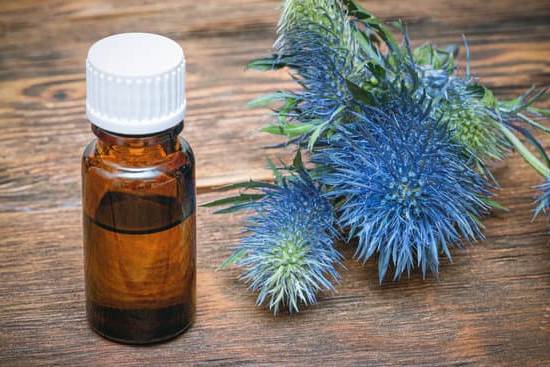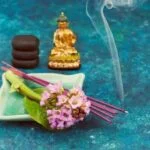Aromatherapy has been used for centuries as a natural and holistic approach to health and well-being. This ancient practice harnesses the power of essential oils to enhance physical, mental, and emotional health. If you’re curious about how to do aromatherapy with essential oils, you’ve come to the right place.
In this article, we will delve into the world of aromatherapy and explore its incredible benefits. We will explain what aromatherapy is and how it works, providing you with a solid foundation of understanding. Additionally, we will guide you on selecting the right essential oils for your needs, as well as exploring their therapeutic effects.
To ensure a successful aromatherapy session, having the proper tools and supplies is crucial. We will discuss the essential equipment you’ll need to create a soothing and relaxing environment. Moreover, we will share tips and tricks on creating the perfect ambiance to set the mood for ultimate relaxation.
Furthermore, we will provide step-by-step instructions on various techniques and methods of applying aromatherapy with essential oils. Safety precautions are also paramount when using these potent substances, so we will outline common mistakes to avoid in order to ensure a safe experience.
Lastly, we understand that incorporating aromatherapy into your daily life can truly maximize its benefits. That’s why we have included practical tips on seamlessly integrating aromatherapy into your routine. Whether it’s at home or while traveling, these suggestions will make it easy for you to continue reaping the rewards of this ancient practice.
If you’re ready to embark on an aromatic journey of healing and relaxation, let’s dive into the wonderful world of aromatherapy with essential oils.
Understanding the Basics
Aromatherapy is a holistic healing practice that utilizes essential oils to promote physical and mental well-being. This section will provide a comprehensive understanding of aromatherapy, including its definition and how it works.
What is Aromatherapy?
Aromatherapy is the therapeutic use of essential oils extracted from plants for improving one’s health and well-being. These essential oils are highly concentrated extracts derived from various parts of aromatic plants such as flowers, leaves, stems, and roots. They contain the natural compounds that give the plants their distinctive aroma, as well as their beneficial properties.
In aromatherapy, the essential oils are either inhaled or applied topically to the skin. When inhaled, the molecules of the essential oils enter the body through the olfactory system, stimulating the brain and triggering various physiological responses. When applied topically, they can penetrate the skin and enter into the bloodstream, providing localized or systemic effects.
How Does Aromatherapy Work?
The mechanisms behind aromatherapy’s effects are multi-faceted. Firstly, when inhaling essential oils, their molecules stimulate receptors in the nasal cavity that send signals to certain areas of the brain, such as the limbic system. The limbic system plays a significant role in emotions, memory, and behavior. As a result, inhaling specific scents can evoke various emotional and physical responses.
Secondly, when applied topically on the skin through massage or other techniques like compresses or baths, essential oils can be absorbed into the bloodstream. From there, they travel throughout the body to exert their therapeutic effects on different organs and systems.
Essential oils possess diverse bioactive compounds which contribute to their therapeutic properties. These compounds may have anti-inflammatory, analgesic (pain-relieving), antiviral, antibacterial properties (and more) depending on each oil’s chemical composition. This unique composition allows essential oils to address a wide range of conditions or concerns, such as stress relief, pain management, immune support, and skincare.
Overall, aromatherapy works through the combined effects of inhalation and topical application of essential oils, offering a holistic approach to enhance physical and emotional well-being. Understanding these basic principles is crucial for successful implementation and maximizing the benefits of aromatherapy.
Choosing the Right Essential Oils for Aromatherapy
When it comes to aromatherapy, selecting the right essential oils is crucial to maximize the therapeutic benefits. With countless options available, it can be overwhelming to know where to start. This comprehensive guide will help you navigate through the vast array of essential oils, allowing you to make informed choices based on your specific needs and preferences.
The Importance of Quality
First and foremost, it’s important to prioritize quality when choosing essential oils for aromatherapy. High-quality oils are not only more potent but also safer to use. Look for oils that are pure and undiluted, as additives or synthetic fragrance can diminish their effectiveness.
Opting for organic or wildcrafted essential oils is another way to ensure quality. These oils are derived from plants grown without the use of pesticides, herbicides, or other harmful chemicals. They tend to have a higher concentration of therapeutic compounds, making them ideal for aromatherapy purposes.
Understanding Scent Profiles
Each essential oil possesses its own unique scent profile, which determines its therapeutic properties and potential uses. Familiarizing yourself with different scent profiles will allow you to choose oils that align with your specific needs.
For example, lavender oil has a calming and relaxing scent profile, making it ideal for stress reduction and promoting sleep. Eucalyptus oil has a fresh and invigorating scent profile, making it well-suited for respiratory issues and mental clarity.
Identifying Your Needs
Understanding your specific needs is crucial in selecting the right essential oils for aromatherapy. Are you looking to alleviate stress? Improve focus and concentration? Relieve muscle pain? Different oils cater to different conditions.
Researching the therapeutic benefits of different essential oils can help you identify which ones will best address your concerns. Whether you want an oil with anti-anxiety properties or an oil that can aid in digestion, narrowing down your options based on your specific needs will make the selection process much easier.
Essential Oils and Their Benefits
When it comes to aromatherapy, essential oils are at the heart of the practice. These potent plant extracts contain unique chemical compounds that give them their therapeutic properties. Understanding the different types of essential oils and their specific benefits is key to harnessing the power of aromatherapy effectively.
There is a wide variety of essential oils available, each with its distinct aroma and therapeutic effects. Here are some popular essential oils and their benefits:
- Lavender: Known for its calming properties, lavender oil can help reduce stress and promote relaxation. It is also commonly used to alleviate headaches and improve sleep quality.
- Peppermint: Refreshing and invigorating, peppermint oil is often used to enhance focus and concentration. It can also soothe digestive issues such as nausea or indigestion.
- Tea Tree: With its powerful antibacterial properties, tea tree oil is commonly used in skincare products to treat acne and other skin conditions. It can also help fight fungal infections like athlete’s foot.
- Eucalyptus: Known for its decongestant properties, eucalyptus oil is frequently used in inhalations or steam treatments to relieve sinus congestion or cold symptoms. It can also be effective in soothing muscle aches and pains.
- Lemon: Energizing and uplifting, lemon oil is commonly used to boost mood and increase mental clarity. Its fresh aroma is often used in cleaning products as well.
It’s important to note that while these are some commonly used essential oils, there are many others available with their unique benefits. Each essential oil has its own set of properties and potential uses, so it’s crucial to do thorough research or consult an expert before using them.
Incorporating different types of essential oils into your aromatherapy practice allows you to tailor your sessions based on your needs and preferences. Whether you’re looking to relax, improve focus, or alleviate specific symptoms, there is likely an essential oil that can help. Experimenting with different oils and their combinations can also add variety to your aromatherapy routine and enhance the overall experience.
| Essential Oil | Benefits |
|---|---|
| Lavender | Calming, stress-reducing, aids sleep |
| Peppermint | Focusing, invigorating, eases digestive issues |
| Tea Tree | Antibacterial, treats acne and fungal infections |
| Eucalyptus | Decongestant, relieves sinus congestion and muscle pain |
| Lemon | Energizing, uplifting, improves mood and mental clarity |
Incorporating essential oils into your aromatherapy sessions can provide numerous physical and emotional benefits. However, it’s vital to use them safely and responsibly. In the next section of this article, we will explore essential aromatherapy tools and supplies that are necessary for a successful session. By understanding how to properly use these tools in combination with the right essential oils for specific purposes, you can maximize the therapeutic effects of aromatherapy in your daily life.
Essential Aromatherapy Tools and Supplies
Aromatherapy can be a powerful tool for promoting relaxation, reducing stress, and improving overall well-being. To ensure a successful aromatherapy session, it is important to have the right tools and supplies on hand. Here are some must-haves for your aromatherapy practice.
Essential Oils
Essential oils are the backbone of aromatherapy. These concentrated plant extracts are responsible for providing the therapeutic benefits associated with this practice. When choosing essential oils, it’s important to consider their quality and purity. Look for reputable brands that use organic or wildcrafted ingredients and have undergone third-party testing.
Diffusers
Diffusers are an essential tool for dispersing essential oils into the air in order to enjoy their aromatic benefits. There are several types of diffusers available, including ultrasonic diffusers, nebulizing diffusers, heat diffusers, and fan diffusers. Each type has its own advantages and disadvantages, so it’s important to choose one that fits your preferences and needs.
Carrier Oils
Carrier oils are used to dilute essential oils before applying them to the skin in massage or skincare routines. They help to prevent skin irritation and allow the essential oils to be spread over a larger area of the body. Popular carrier oils include jojoba oil, sweet almond oil, coconut oil, and grapeseed oil.
Storage Solutions
Proper storage is crucial for maintaining the integrity of your essential oils. They should be kept in dark glass bottles away from direct sunlight or heat sources. Aromatherapy storage boxes or cases can help organize your collection and protect your oils from light exposure and possible contamination.
Cleaning Supplies
Regular cleaning of your aromatherapy tools is important for maintaining hygiene and preventing potential cross-contamination. Some essential oil diffusers and storage bottles may require specific cleaning methods, so it’s important to refer to the manufacturer’s instructions. Additionally, having cleaning supplies such as cotton swabs, distilled water, and mild soap on hand can help keep your tools in optimal condition.
Notebooks and Journals
Keeping a record of your aromatherapy sessions can be helpful for tracking your experiences, noting any reactions or sensitivities to specific oils, and keeping a record of blends or recipes that you enjoy. A dedicated notebook or journal can also serve as a valuable resource for future reference and experimentation.
By ensuring you have these essential tools and supplies, you can create a successful aromatherapy session that allows you to fully enjoy the therapeutic benefits of essential oils.
Creating a Relaxing Environment
When it comes to practicing aromatherapy with essential oils, creating a relaxing environment is key to enhancing the experience and maximizing its benefits. The atmosphere in which you engage in aromatherapy can greatly influence your mood, stress levels, and overall well-being. Here are some tips and tricks for setting the mood and creating a tranquil space for your aromatherapy sessions.
- Choose the Right Space: Find a quiet and comfortable space in your home where you can create a dedicated area for aromatherapy. It could be a corner of your bedroom, living room, or even a private nook in your backyard. Make sure this space is clean, clutter-free, and free from any distractions that may disrupt your relaxation.
- Set the Lighting: Lighting plays a crucial role in setting the mood for aromatherapy. Natural light is ideal during the day as it creates an uplifting and energizing ambiance. In the evening or when natural light is not available, opt for soft, warm lighting such as candles or dimmed lamps to create a cozy and calming atmosphere.
- Utilize Music or Sounds: Music has a profound effect on our emotions and can greatly enhance relaxation during aromatherapy sessions. Choose soothing music or nature sounds like ocean waves or bird songs to create an immersive experience that complements the aromatic scents of essential oils.
- Enhance Ambiance with Décor: Incorporating elements of nature into your space can further enhance the ambiance during aromatherapy sessions. Add potted plants, fresh flowers, or use natural materials like wood and stone to create a sense of serenity and connection with nature.
| Tips | Tricks |
|---|---|
| Choose the Right Space | Find a quiet and comfortable space dedicated to aromatherapy |
| Set the Lighting | Opt for natural light during the day and soft, warm lighting in the evening |
| Utilize Music or Sounds | Select soothing music or nature sounds to enhance relaxation |
| Enhance Ambiance with Décor | Incorporate natural elements into your space for a sense of serenity and connection with nature |
By following these tips and tricks, you can create a soothing and inviting environment that enhances the therapeutic effects of aromatherapy. Remember, the goal is to promote relaxation, reduce stress, and uplift your mood, so take the time to set the mood right before indulging in your aromatherapy sessions.
Techniques and Methods
Aromatherapy can be applied in various ways, depending on personal preference and the desired effect. Here are some step-by-step instructions for different techniques and methods to effectively use essential oils for aromatherapy:
Diffusion
- Choose a diffuser that suits your needs, such as ultrasonic or nebulizing diffusers.
- Add water to the designated level and add a few drops of your chosen essential oil into the tank.
- Turn on the diffuser and adjust settings based on your preference.
- Allow the aroma to disperse throughout the room for a specified amount of time, usually around 15-30 minutes.
Inhalation
- Place a few drops of essential oil onto a tissue or handkerchief.
- Hold the scented material below your nose and inhale deeply.
- Alternatively, you can pour hot water into a bowl and add a few drops of essential oil. Cover your head with a towel, creating a tent-like shape over the bowl. Close your eyes and breathe in the steam for about 5-10 minutes.
Topical Application
- Dilute essential oils by mixing them with carrier oils, such as jojoba, coconut, or almond oil.
- Follow recommended guidelines for dilution ratios (usually 1-3% dilution for adults).
- Apply the diluted mixture to specific areas of the body, such as temples, wrists, neck, or soles of feet.
- Perform a patch test on a small area of skin before applying it to larger areas to check for any potential allergic reactions.
Massage
- Prepare a massage blend by combining essential oils with carrier oils in a small bottle or container.
- Warm up the blend by placing it in warm water or gently rubbing it between your palms.
- Apply the blend onto your palms and massage it onto the body using various techniques like effleurage, petrissage, or friction.
- Focus on areas that hold tension or need relaxation.
Bath
- Add a few drops of essential oil to a carrier oil or an emulsifier like milk, liquid soap, or bath salts before adding it to your bathwater.
- Mix well before stepping into the tub.
- Relax and soak in the aromatic bath for around 15-20 minutes.
Remember to always read the instructions provided with your essential oils and consider any contraindications or precautions. It is also important to consult with a certified aromatherapist for personalized advice and guidance based on individual needs and health conditions. Follow these step-by-step instructions to enhance your aromatherapy experience and enjoy the many benefits of essential oils.
Safety Precautions and Considerations
When practicing aromatherapy with essential oils, it is crucial to prioritize safety and understand the potential risks involved. While essential oils have many benefits, they are potent substances that should be used with caution. By following some safety precautions and considering a few key factors, you can enjoy the benefits of aromatherapy while minimizing any potential risks.
Firstly, it is important to remember that not all essential oils are safe for everyone. Some individuals may have allergies or sensitivities to certain oils, which can cause adverse reactions. It is recommended to perform a patch test on a small area of skin before applying any essential oil topically. If you experience redness, itching, or swelling, it is best to avoid using that particular oil.
Additionally, certain essential oils should not be used during pregnancy or by individuals with certain health conditions. For example, pregnant women should avoid using oils such as clary sage, rosemary, and wintergreen. It is always advisable to consult with a healthcare professional before using any essential oil if you have specific health concerns or are unsure about its suitability for your situation.
Proper dilution is another important aspect of ensuring safety in aromatherapy. Essential oils are highly concentrated and can irritate the skin if used undiluted. It is recommended to use a carrier oil such as coconut oil or jojoba oil when applying essential oils topically. The general rule of thumb is to use a 2-3% dilution ratio – approximately 12 drops of essential oil per ounce of carrier oil.
Incorporating Aromatherapy into Daily Life
Aromatherapy has become a popular practice for self-care and enhancing well-being. It is not just limited to spa treatments or occasional use; it can be integrated into your daily routine to maximize its benefits. By incorporating aromatherapy into your daily life, you can experience its therapeutic effects on a consistent basis and promote overall wellness.
One practical tip for incorporating aromatherapy into your daily life is to create a morning ritual using essential oils. Start your day by diffusing uplifting scents like lemon or peppermint in your living space or applying them topically using a carrier oil. This can help invigorate your senses, boost energy levels, and enhance mental focus as you go about your day.
Another way to integrate aromatherapy into everyday activities is by using scented products throughout the house. You can add a few drops of essential oils to cleaning solutions or laundry detergent for a fresh and natural scent. Additionally, placing scented sachets or potpourri in rooms such as the bedroom or bathroom can provide a calming ambiance and promote relaxation.
Incorporating aromatherapy into bedtime routines can also aid in promoting better sleep quality. Diffusing lavender or chamomile essential oils in the bedroom before going to bed can help induce relaxation and create a soothing environment that prepares the body for restful sleep. You may also apply these oils on pulse points or use them in a warm bath before bedtime for deeper relaxation.
By integrating these practical tips into your daily life, you can make the most out of aromatherapy’s benefits. Remember to select essential oils that align with your specific needs and preferences, and always ensure proper dilution when applying them topically. Aromatherapy has the potential to positively impact both your physical and mental state, providing you with an overall improved sense of well-being in your day-to-day life.
Additional Resources
In conclusion, incorporating aromatherapy into your daily life can be a wonderful way to enhance well-being and promote relaxation. By understanding the basics of aromatherapy and choosing the right essential oils, you can begin to experience the numerous benefits it has to offer. With the right tools and supplies, along with creating a relaxing environment, you can create the perfect atmosphere for your aromatherapy session.
Using techniques and methods outlined in this article, you can easily apply aromatherapy with essential oils. However, it is important to adhere to safety precautions and considerations to avoid any potential risks or mistakes. By following these guidelines, you can ensure a safe and enjoyable experience.
To further deepen your knowledge and journey into aromatherapy, there are plenty of additional resources available. Books, websites, and apps dedicated to aromatherapy can provide you with valuable information on different essential oils and their uses. They can also offer insights into specific techniques or recipes that may interest you. Taking advantage of these resources will not only enhance your understanding but also help you explore new ways to incorporate aromatherapy into your daily life.
Overall, by utilizing the knowledge gained from this article along with exploring additional resources, you will be well-equipped to embark on your aromatherapy journey. Whether it’s for relaxation or specific therapeutic purposes, aromatic essential oils have immense potential in enhancing both physical and emotional well-being. With dedication and an open mind, you can fully embrace the power of aromatherapy in your life.
Frequently Asked Questions
How do you dilute essential oils for aromatherapy?
Diluting essential oils for aromatherapy is an important step to ensure their safe and effective use. Since essential oils are highly concentrated, it is necessary to mix them with a carrier oil before applying them to the skin or using them in diffusers. A commonly used dilution ratio is 2-3 drops of essential oil per teaspoon of carrier oil, but this can vary depending on the specific oil and desired strength.
Carrier oils like sweet almond, jojoba, or coconut oil are often chosen for their neutral scent and ability to nourish the skin. Dilution not only helps reduce the risk of skin irritation but also allows for better absorption into the body, ensuring that the therapeutic benefits of the essential oils are maximized.
Do essential oils work for aromatherapy?
Essential oils have been used for centuries in traditional practices like aromatherapy and have gained popularity in recent years for their various health benefits. While there is scientific evidence supporting some of these claims, it’s important to note that research on essential oils is still limited and more studies are needed to fully understand their effectiveness. That being said, many people have reported positive experiences with aromatherapy using essential oils.
When used correctly and safely, certain essential oils can help promote relaxation, alleviate stress, improve sleep quality, boost mood, or provide relief from minor ailments like headaches or congestion. It’s crucial to consult qualified professionals and use high-quality essential oils from reputable sources.
What are the 3 ways essential oils can be used?
There are three main ways essential oils can be used: topically, inhalation/vaporization, and ingestion (although ingestion should only be done under professional guidance). When using essential oils topically, they can be applied directly to the skin after proper dilution with a carrier oil. Popular areas for application include pulse points like wrists or temples or areas where specific benefits are desired (e.g., sore muscles).
Inhalation involves dispersing the essential oil into the air through diffusers or inhalers so that the aroma can be inhaled. This method allows the scent molecules to interact with the olfactory system and potentially impact emotional or mental well-being. Ingestion is less common and should only be done with essential oils deemed safe for internal use by certified aromatherapists or healthcare professionals, as not all oils are suitable for ingestion and can have adverse effects if used improperly.

Are you looking for a natural way to improve your health and wellbeing?
If so, aromatherapy may be the answer for you.





